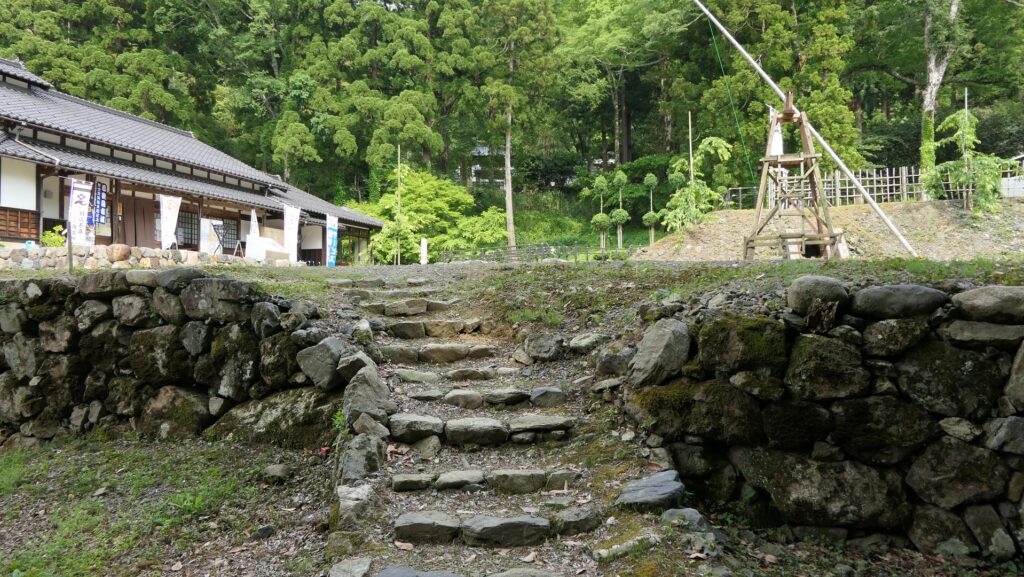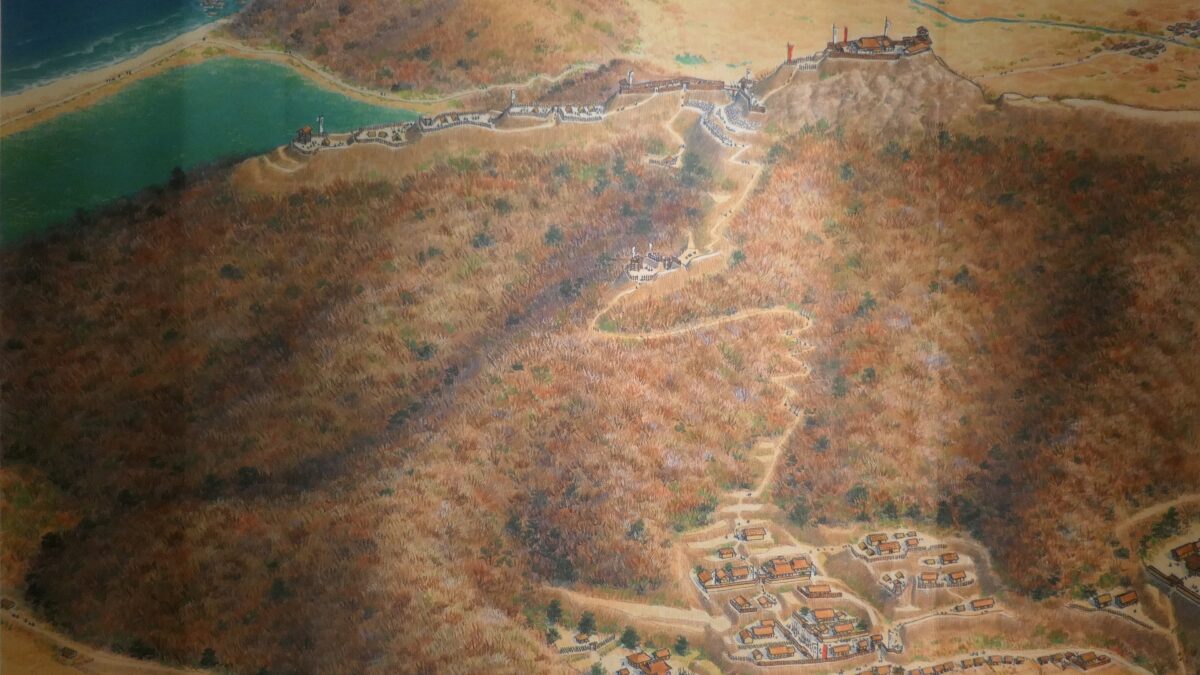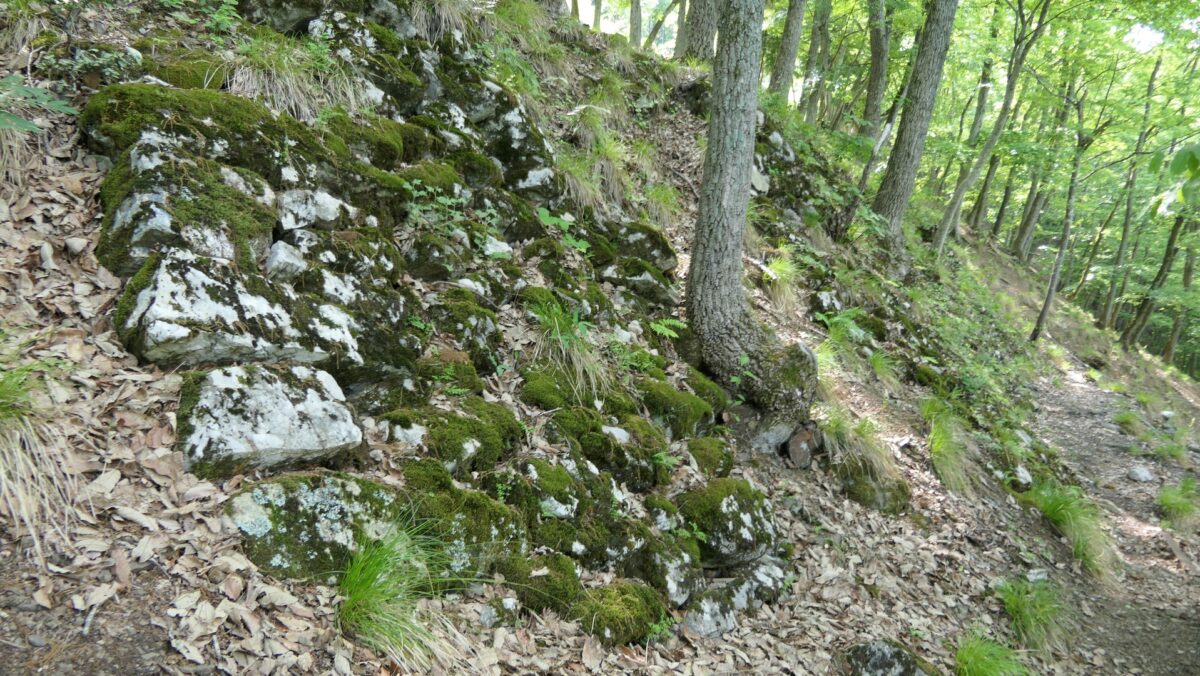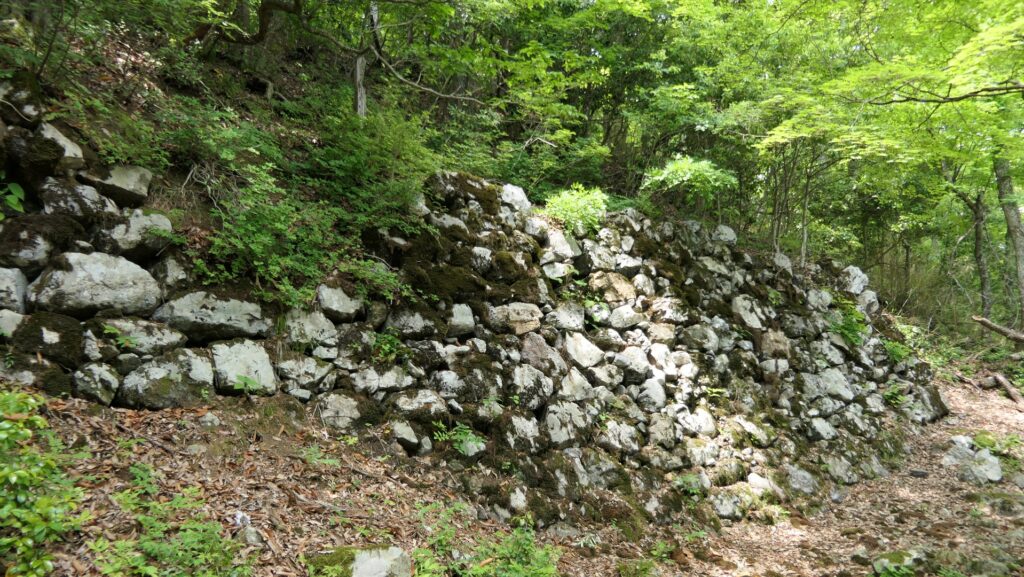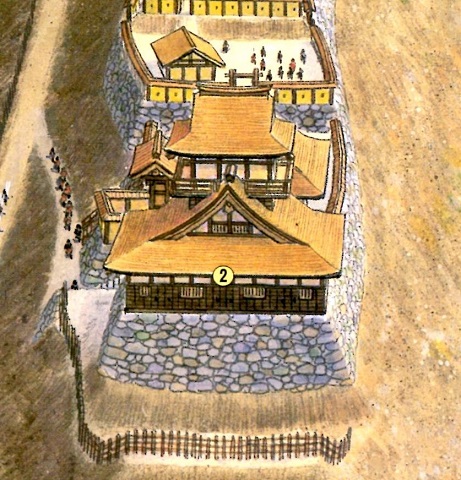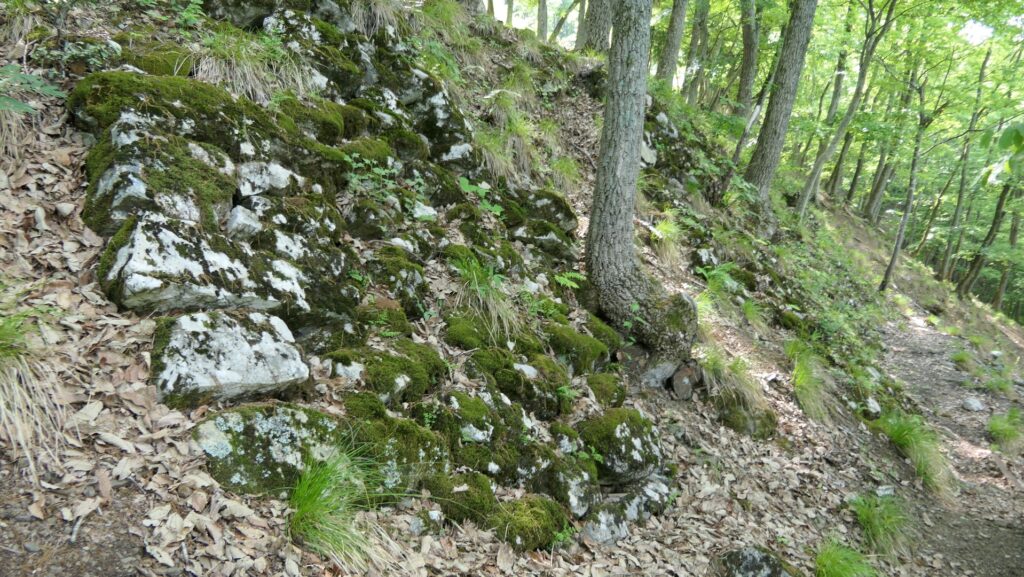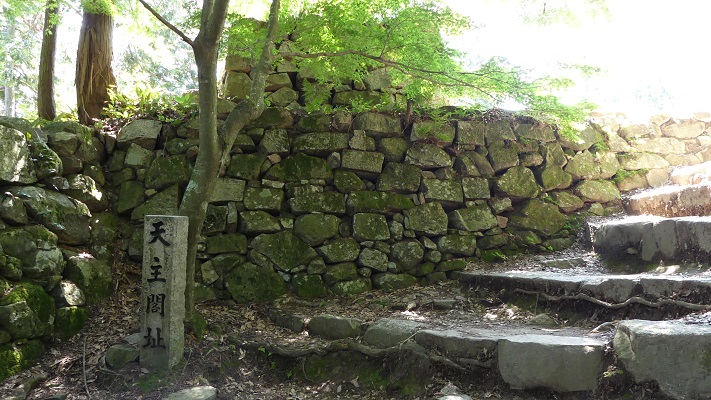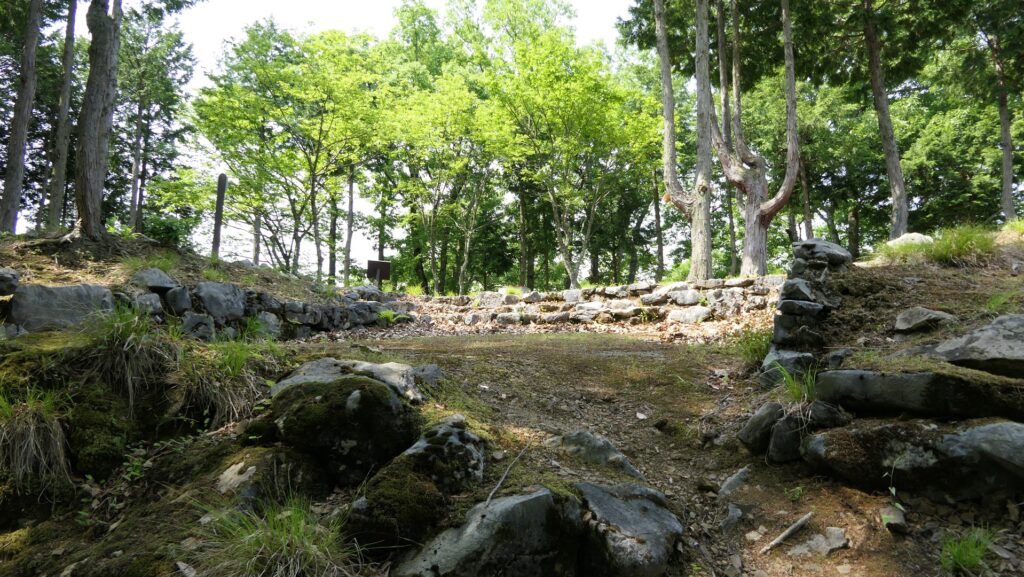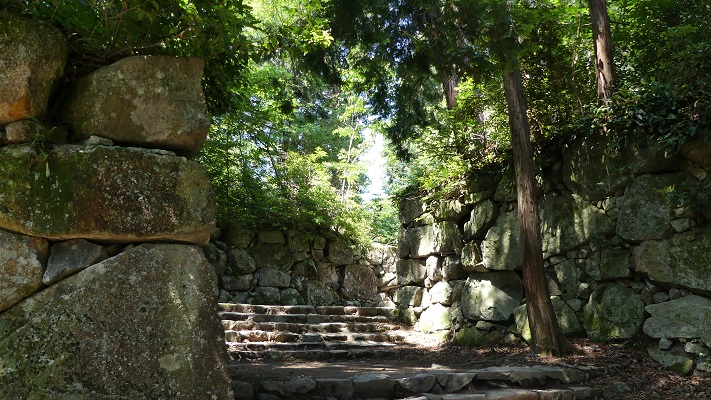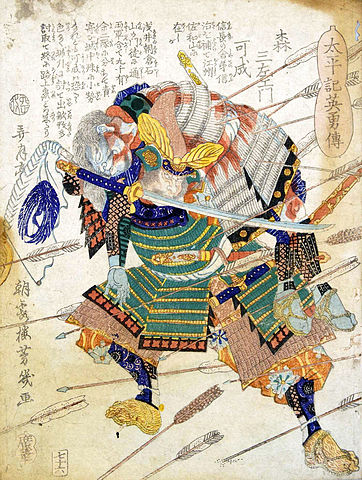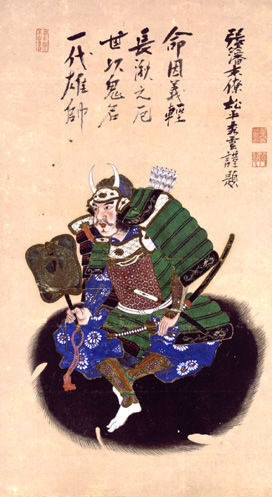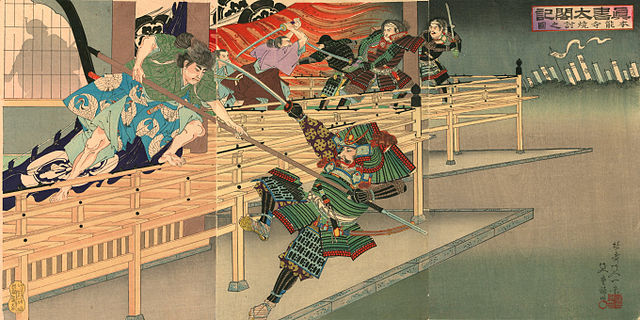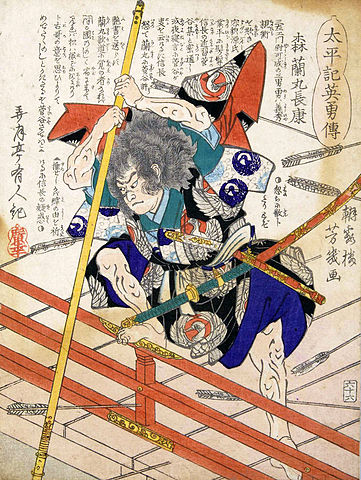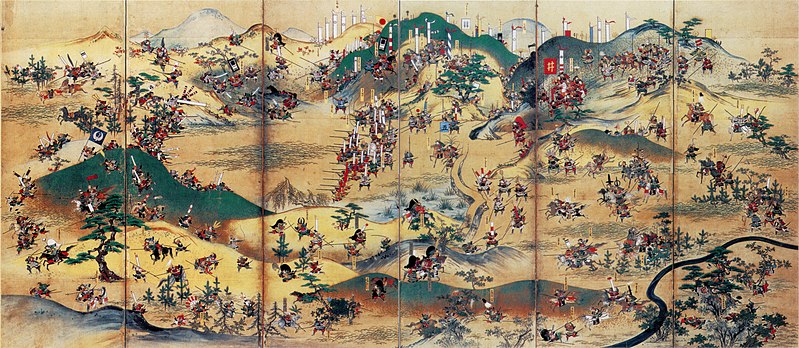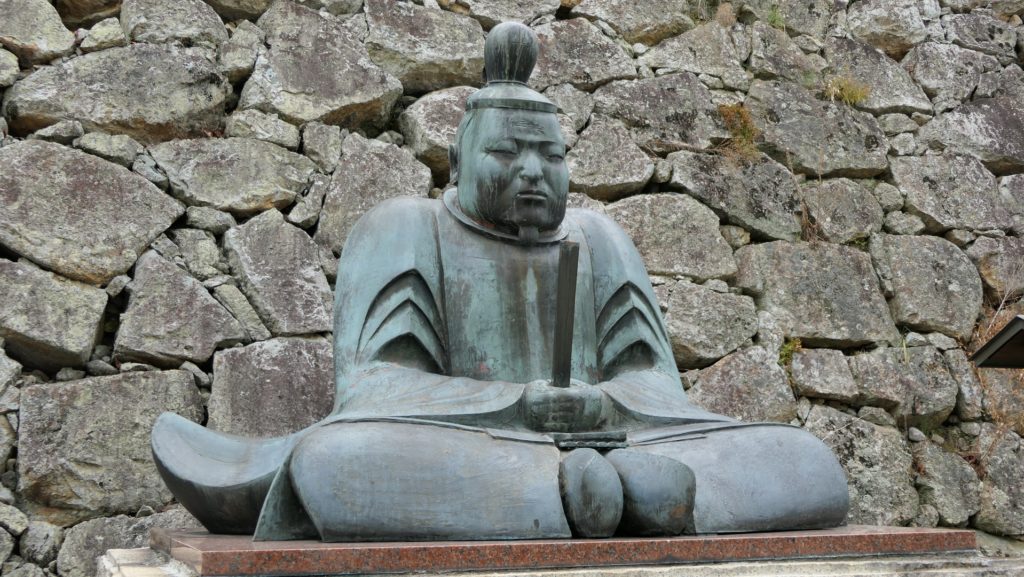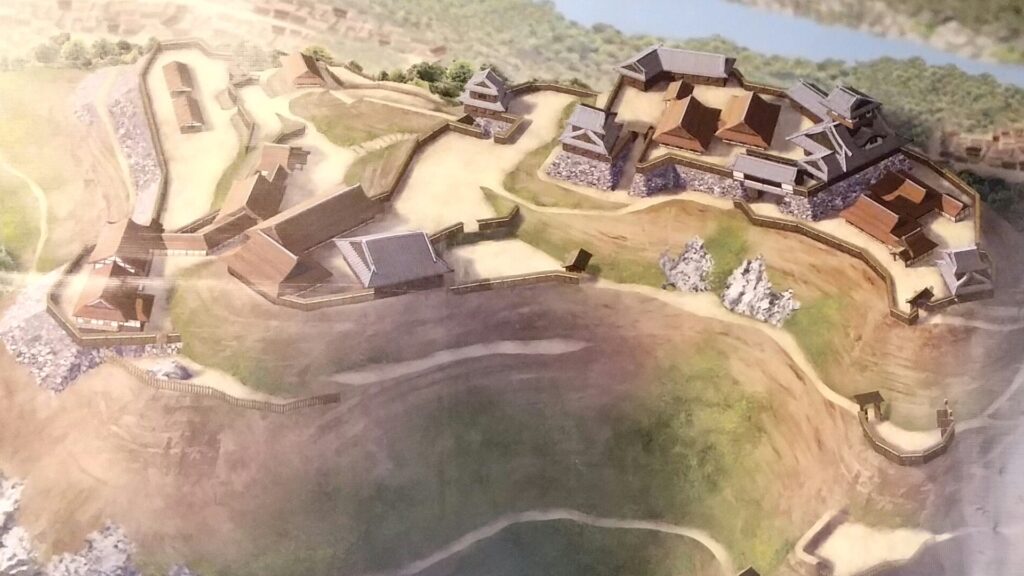Location and History
Katsuhisa Awaya reclaims Castle
What is now Fukui Prefecture was divided into Echizen Province in the Northeast and Wakasa Province in the Southwest. In the 16th Century during the Sengoku Period, the Asakura Clan governed Echizen while the Takeda Clan owned Wakasa. Sagaki-Kuniyoshi Castle was in Wakasa Province near the border between both provinces. Sagaki comes from the name of the area around the castle and Kuniyoshi originates from the name of the person who first built the castle sometime before the Sengoku Period. People at that time usually called it “Sagaki Castle” and the other name “Kuniyoshi Castle” became popular later. As a result, historians and history buffs often call it Sagaki-Kuniyoshi Castle, using both names.
The location of the castleComparing the Asakura and Takeda Clans, Asakura were much stronger than Takeda. Asakura tried to extend their power to Wakasa Province, in response, Takeda wanted to rely on Asakura. However, Takeda’s retainers, such as one of the senior vassals, Katsuhisa Awaya, rebelled against them. Katsuhisa reclaimed an abandoned castle to prevent the Asakura Clan from invading Wakasa Province, called Sagaki-Kuniyoshi Castle. The castle was built on a steep mountain with a height at 197m near the border of Echizen Provence. People who went in or out of Wakasa Province had to pass a ridge beside the mountain, so the castle was the pivot of defense for the province. The lord of the castle usually lived in the Main Hall on the valley below the mountain, but used the mountain part when a battle broke out.
Asakura Clan′s troops are repelled 5 times
The relief map around the castleThe Asakura Clan attacked Sagaki-Kuniyoshi Castle 5 times between 1563 and 1567 to crush the rebellion. However, all the attacks failed because the rebel army and the castle were so strong. The battles between them occurred as follows. The warriors, their families, and other people around the castle gathered on the mountain carrying ammunition, stones, and wood. Meanwhile, some defenders hid in ambush beside the route to the castle. When the attackers got close to the castle on the route, the defenders made a surprise attack on them. After that, when the attackers climbed up to the mid slope on the mountain, the defenders shot guns and arrows, and threw the stones and wood all together. Many of the attackers were hit and fell into the valley, forcing the rest to withdraw. In addition, when the attackers looted property and crops away from the town and fields near the castle, the defenders made a night attack on Asakura’s positions. As a result, the castle was considered to be impregnable.

Castle is involved with Battle over Country
A fortunate opportunity for Katsuhisa came in 1570 when the great warlord, Nobunaga Oda attacked the Asakura Clan. Nobunaga visited Sagaki-Kuniyoshi Castle during his invasion of Echizen and praised Katsuhisa’s military achievement. The battle between Oda and the Asakura lasted until 1573 when the Asakura Clan was defeated. Nobunaga gave Wakasa Province to one of his senior vassals, Nagahide Niwa whom Katsuhisa served. Times rapidly changed after Nobunaga was killed in the Honnoji Incident in 1582. Nobunaga’s former retainers, Hideyoshi Hashiba and Katsuie Shibata were against each other for the initiative. Katsuie was in Echizen Province while Nagahide supported Hideyoshi. That meant Sagaki-Kuniyoshi Castle became a castle at the tense border between two provinces again.

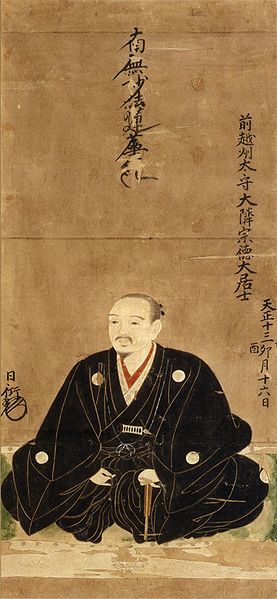
Katsuhisa’s boss, Nagahide was responsible for constructing Azuchi Castle, famously built by Nobunaga Oda. That meant Nagahide had advanced techniques for improving castles. Sagaki-Kuniyoshi Castle had basically been made of soil, but was fortified using stone walls. In the end, the battle between Hideyoshi and Katsuie happened in another place before Hideyoshi won. During the unification of Japan by Hideyoshi followed by the Tokugawa Shogunate, the castle changed hands several times. The castle still continued to be improved using stone walls, but the mountain part was eventually abandoned. Instead, only the Main Hall part in the valley was used because it was convenient for the government. In 1634 when the Sakai Clan, the lords of the Obama Domain including Wakasa Province, built the Sagaki magistrate’s office, the castle was entirely abandoned.

